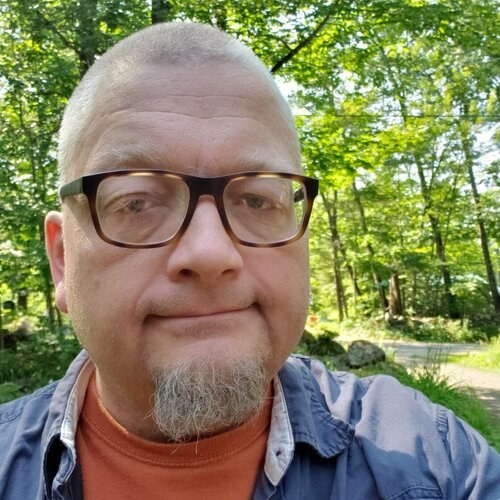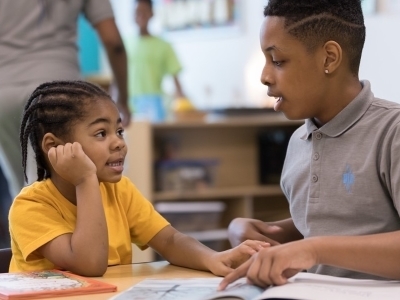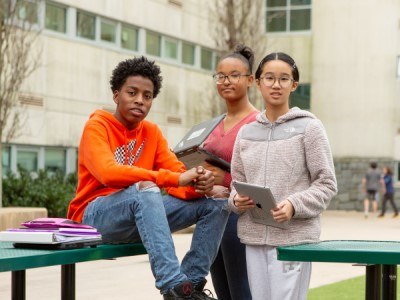Ethics, Tension, Relationships, and Questions
Topics

Educators are rethinking the purposes, forms, and nature of assessment. Beyond testing mastery of traditional content knowledge—an essential task, but not nearly sufficient—educators are designing assessment for learning as an integral part of the learning process.
What We Learned at the Assessment for Good Conference
Reflection and dialogue are at the heart of rethinking assessment, and the way we frame our reflections and conversations through our professional relationships matters.
“I want to be a force for real good. In other words, I know that there are bad forces, forces that bring suffering to others and misery to the world, but I want to be the opposite force. I want to be the force which is truly for good.”
—John Coltrane
The conversation that had to happen … happened. The premiere Assessment for Good Conference occurred last week, online, organized by myself and Carisa Corrow of Educating for Good, with the help of many many friends. The conference grew out of years of work and thought, but became urgent in the recent pandemics, when many of the inequities and injustices that the conference was made to address, became so obvious that they were impossible to ignore. Thinking of assessment—because that’s what we do—we understood that real harm was possible, that educators were overwhelmed by the logistical, that the pedagogical and ethical were being deferred till a later date (possibly never to come), and that, because of this, our conference could be “a force for real good.”
The conference developed quickly and had a lot of “firsts” happening, our first virtual conference, first time with many tools, first time this team worked together. We (the organizers) began the morning of August 10 with a sort of joyfully fatalistic, “Here goes! Hope it works out!” It did work out. The spirit of the participants—to eagerly (hungrily?) engage in the conversations and questions and dilemmas—energized the days, and being a facilitator of that energy was a joy.
As much as we hoped and designed the seminar to be useful for participants, we also wanted to learn from these conversations. One of the most important things I learned is that there are more allies for Assessment for Good out there than I thought. More than once, in my sessions on Ethical Assessment, I was trying out an idea “amongst strangers” for the first time, hoping it “made sense” and could be useful or built upon. I discovered that participants also were being kept up at night by the same things I am! Other things we noticed:
- Thinking of assessment through the lense of ethics felt new. Sure, assessment could be standardized, or non-student centered, or non-culturally responsive, but the idea that it could be unethical seemed to be a framing that struck many as powerful. It may simply be a matter of saying something explicitly that you've all been thinking inside for a while. We've been saying, "You should do better with assessment." We haven't been saying, "It would be unethical for you not to do better." It’s a sharper formulation—possibly an (appropriate) accusation—that communicates the stakes involved.
- The tension between trying to upend the system and having to work within the system ran throughout the whole conference, most loudly in Alvin Rosales’ Activism and Education circle which focused on Paolo Freire’s Pedagogy of the Oppressed. Many of us explicitly said that we got into education to help kids (and adults) navigate a hostile, racist, bullying system. That's a different goal from deconstructing the system and building something new in its place. I feel both goals strongly. One goal both supports and undermines the other.
- A common theme is the primacy that relationships should hold in our work—not as a means to an end, but an end in itself. This was reinforced again and again in the week, in the Circle of Stories led by Kau‘i Sang and Cheryl Ka‘uhane Lupenui, in the "View from the Pandemic" circle led by Tony Siddall and Sarah Collins Lench, and, really, in all the circles in which we connected and made new friends.
- In addition, Carisa Corrow’s feedback circles and Suzanne Edwards-Acton’s My Work to Do circles reminded us of the importance of continuously interrogating our experience and ourselves in reflection and conversation, which seems to be the one common element running through it all. Seriously, never, ever rest in your ideas.
We also figured out some useful tips around running a virtual conference, and it seems like they would apply when trying to run a distance classroom. In the spirit of Adam Browning’s recent post, here are three of those things:
- Circles are an extraordinary mode for doing this work. Change happens one conversation at a time, and you have hundreds of conversations. This philosophy has guided me for many years. Circles allow the conversation—not the lecture or the text—to be the unit of creation. A bunch of us get together in a (literal) circle of care to talk and create meaning from a newly encountered idea (see Emergent Strategy). Facilitators and protocols guide the way but don’t determine any particular outcome. Sessions aren’t a transaction of knowledge; they are a conspiracy of unknowing.
- Four circles (each an hour long) is the max for a day. Three is ideal. This probably surprises no one. What is surprising is how hard that limit was for us. I went from being alert, to alert and tired, to alert and punchy, to the edge of being profoundly stupid by the time the day ended. Thinking is hard. Fatigue is a bear. Respect it.
- Small group discussions were an essential part of every circle, but how small? I spent a ridiculous amount of energy pondering this during planning. After I had done my first session with small groups of four or five participants, Alvin Rosales landed on triads, and that seemed to work really well. Ultimately, as per a participant’s observation (thanks, Jenn Poon), I realized that the “proper” size of a small group depends on its function. For example, if you’re going to be talking from personal experience, then a triad is effective; you don’t need time to figure out what you think. A larger group works if you are responding to a text or new idea or content because some conversants need more time to ferment the ideas than others, and if two out of three are fermenting, the conversation awkwardly halts. If there are, however, more participants then the conversation can start and gain momentum. It is endlessly fascinating how the structure of conversations shape their outcomes.
The experience of this conference, the debut for our new organization, Educating for Good, was inspiring and a little intoxicating. Talking about obscure ideas around education, activism, equity, structures, and functions—that’s my idea of a good time. The circles will continue through the year, and it’s still early days, plenty of time for new friends to join in—at no cost (connect with me to find out how). The conversations will continue. And the writing. And the thinking. Immense gratitude to everyone who has made this possible.
Photo at top by PeopleImages / iStock.com




